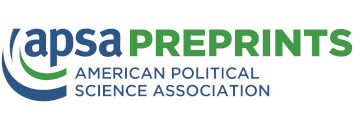Abstract
This paper contributes to the ongoing effort by disability studies scholars to rectify the overriding Whiteness in the historiography of disability politics and by political scientists to center race and ethnicity in their analysis of U.S. politics. It argues that understanding why disability is too White (to paraphrase the viral hashtag coined by activist Vilissa Thompson) requires attending, not simply to the intentions and attitudes of individual activists and their organizations, but to the political institutions that structure and channel their activism. Applying theories of discursive institutionalism and racial institutional orders, this paper examines the period between 1981-1996, specifically the years culminating in the Americans with Disabilities Act of 1990 and, a few years later, the welfare reform law the Personal Responsibility and Work Opportunity Reconciliation Act. Its purpose is to analyze disability, race, and poverty as imbricated systems of oppression and inequality.


![Author ORCID: We display the ORCID iD icon alongside authors names on our website to acknowledge that the ORCiD has been authenticated when entered by the user. To view the users ORCiD record click the icon. [opens in a new tab]](https://preprints.apsanet.org/engage/assets/public/apsa/logo/orcid.png)
